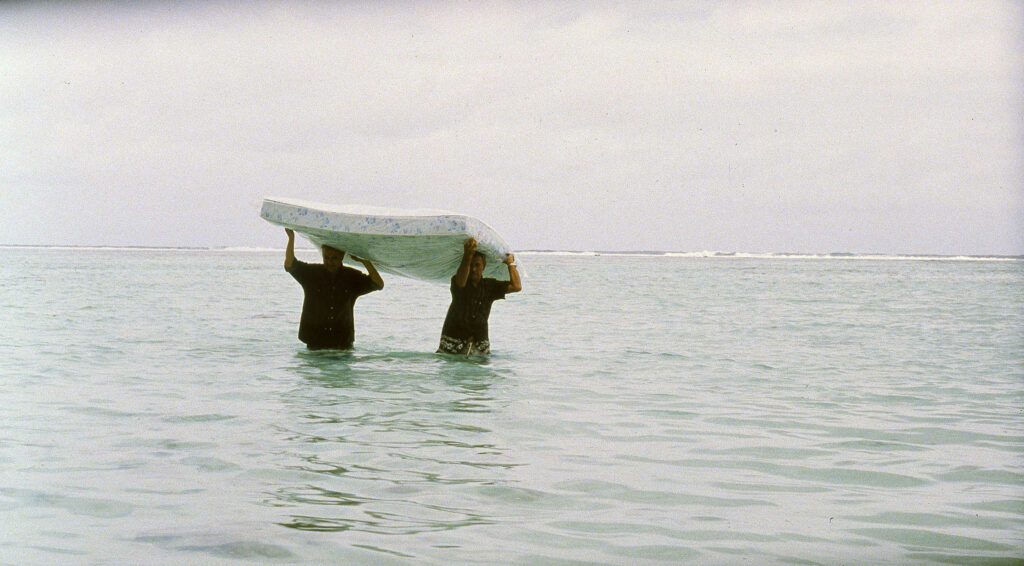Fast-forwarding through Claire Denis’ 2004 film L’intrus (The Intruder), you would be forgiven for thinking you were watching a crime drama, or perhaps an international spy thriller. As the film hops between geographical locations, we get glimpses of illegal border crossings, shady business deals, blackmail and murder. The experience of actually watching the film, however, is characterised by disorienting ellipses that dispel any comforts that might usually be afforded by genre markers: Who are these characters? What are their relationships to one another? How much time has passed? What’s going on?

The film takes its inspiration and name from French philosopher Jean-Luc Nancy’s reflections on the heart transplant he underwent, though it could hardly be called a straightforward adaptation. Nancy’s musings on intrusion, foreignness and strangeness are transposed onto the character of Louis (a fantastic Michel Subor), a reclusive man with a failing heart living on the French-Swiss border. Making arrangements for a black-market transplant, Louis abandons his son (Grégoire Colin) and lover (Bambou) and makes his way first to Korea, where he is shadowed by a mysterious Russian woman (Katia Golubeva), and then to Tahiti in search of another abandoned son.
We don’t discover much about Louis’ past, nor how he came to earn the stash of money he retrieves from a Swiss bank. In an intriguing piece of filmmaking, later scenes are cut with footage of a younger Michel Subor starring in Paul Gégauff’s unreleased 1962 film Le Reflux, also shot in Tahiti. In interviews, Denis claims it took years to track down the negatives. It was certainly worth the hunt – these grainy flashbacks work well to add to L’intrus’s dreamlike quality.

It might be tempting to explain away the film’s obscurity as an exercise in subjectivity, and to claim that the more puzzling narrative elements are externalisations of Louis’ desires and insecurities. But such a reading fails to account for the feeling that we, the viewer, are also a kind of intruder. It’s not just that we’re denied important knowledge about the lead character; the camerawork – in turns intimate and detached – often gives the sense that we’re seeing something we maybe shouldn’t.
The film’s lack of narrative payoff can be frustrating, and there will certainly be viewers that will find it – sorry – heartless. But Denis’ fondness for abstraction shouldn’t be mistaken for pretentiousness, and certainly not coldness. Unlike the Nancy text on which it is based, L’intrus doesn’t need to be approached like an intellectual exercise. For sure, there’s plenty of Denis’ usual attentiveness to networks of globalisation and neo-colonialism, but there’s also a great deal of pleasure to be gained from just switching off and letting the gorgeous – if sometimes troubling – textures of the film wash over you.

A large part of the credit has to go to Denis’ two frequent collaborators: Stuart A. Staples for his ominous, dissonant score, and Agnès Godard for creating such incredibly tactile images, whether that involves lingering on painterly seascapes or scanning the weathered, leathery surfaces of Subor’s body.
L’intrus (The Intruder) will be opening for an exclusive digital run at metrograph.com from March 26th, and it’s a fantastic opportunity to see a film that’s recently only been available in the US and UK as an out-of-print DVD. I’m hoping a wider digital or Blu-ray release will follow, for this is a unique film well worth seeking out.
